Is the tide turning against the killing of ‘cursed’ infants in Ethiopia?
November 5, 2011 — Updated 1155 GMT (1955 HKT)
STORY HIGHLIGHTS
- In some Ethiopian villages, children considered “mingi,” or cursed, are killed
- A child can be mingi because of physical deformities, illegitimate birth or superstitions
- Bad luck will come iIf they do not kill the cursed infant, some villagers believe
- An effort by the government, aid workers and mission groups helps save children
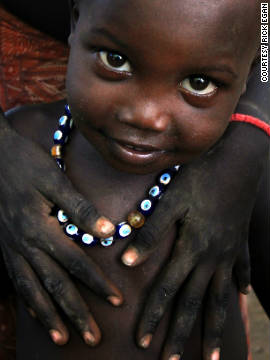 (CNN) — His top teeth came in before his bottom teeth. That is how elders of the Kara tribe determined that a healthy baby boy needed to be killed.
(CNN) — His top teeth came in before his bottom teeth. That is how elders of the Kara tribe determined that a healthy baby boy needed to be killed.The child was “mingi” — cursed, according to their ancient superstitions. With every breath, they believed, the boy was beckoning an evil spirit into their village.
Murderous though it was, the decision to kill the boy was the easy part. It was the sacrifice of one infant for the good of the entire tribe — a rite that some of the elders had witnessed hundreds of times throughout their lives in Ethiopia’s remote Omo River Valley.
The tribe’s leaders were less certain of what they should do about the boy’s twin brother, who had died of sickness shortly after birth. After some debate, including a pensive examination of a goat’s intestines, they decided the dead child must have been mingi, too.
So they dug up the corpse, bound it to the living boy, paddled a canoe into the center of the Omo River and threw them both into the murky brown water.
That was five years ago — a time before many outside of this isolated basin had ever heard of mingi.
Today, nudged out of acquiescence by a slow-growing global condemnation of the ritualistic infanticide practiced by the Kara, Banna and Hamar tribes of southern Ethiopia, regional government officials have begun to take action — threatening prison for those complicit in mingi killings.
Meanwhile, a small band of Banna Christians has taken it upon itself to give sanctuary to the mingi children of their tribe; an enlightenment among some young and educated tribesmen of the Kara has spawned an orphanage for the condemned; and global Samaritans, drawn by the plights of these defenseless children, have offered money and adoptive homes.
The combined efforts have saved scores of children.
But none of the interventions has brought an end to the deep fear that stokes the slaughter. And so it is estimated by some government officials, rescue workers and village elders that hundreds of children are still being killed each year, by drowning, suffocation and deliberate starvation.
‘All the people‘Bona Shapo steers a dugout canoe through crocodile-infested waters, guiding the craft ashore where the Omo River bends at the bottom of a crumbling precipice near the tiny stick-and-thatch village of Korcho.
The sun is setting into the ravine. Across the river, a troop of colobus monkeys whoops and howls, stirring a flock of gangly marabou storks from their perches on a stand of flat-topped acacia trees.
“This is where they do it,” says Bona, who stood upon these same muddy banks on the day the twin boys were thrown into the river. “Sometimes they take the babies out in a boat. Other times, they just take them to the edge of the water and throw them in.”
The mingi rites of the Kara are slightly different from those of the Banna, which are, in turn, different from the Hamar. But common among all is a profound fear of what might happen if the killings were to stop.
If they have the mingi, there will be no water, no food, no cattle. But when they throw the baby away, everything is good again.villager Bona Shapo
There has been little academic scholarship on the subject, but some observers have speculated that it might have started many generations ago as a way to purge people who are more likely to become a burden or who cannot contribute to the propagation of their people. That might explain why children who break a tooth or injure their genitals are among those singled out for death. Others are killed because they are born out of wedlock or to married parents who have not completed a ceremony announcing their intention to have children — a brutal enforcement, perhaps, of the deep-rooted duty that members have to the tribe first, their family second.
As far as the Kara elders are concerned, these rules are as old and unyielding as the Omo River — and every bit as crucial to their survival. Allowing a mingi child to live among the Kara, they believe, could cause the rains to stop falling and the sun to grow hotter.
“If they have the mingi, there will be no water, no food, no cattle,” Bona says. “But when they throw the baby away, everything is good again.”
Elders bitterly recall times in which their sympathy for mingi children prevailed over their fear. They believe that heedlessness cost the tribe most of its cattle and many of its members. Today, Kara leaders say, a more respectful adherence to the brutal obligations of their beliefs has allowed their tribe to thrive.
“So yes, it is sad, but we are thinking about the village, the family, all the people,” Bona says. “We tell the parents, ‘don’t cry for your baby, because you will save everyone. You can always make another baby.’ “
‘No other option’ She wasn’t permitted to nurse him, hold him or even see him. But Erma Ayeli still clings to an image of the baby she lost — fantasy though it may be.
“I think he must have been a beautiful boy,” Erma says as she rests on a pile of sticks, surrounded by a playful mob of younger children. “I wanted to keep him.”
Her chin sinks into the tornado of colorful beads draped around her neck.
Apparently sensing her sorrow, a young boy rests his half-shorn head playfully on her lap. Erma tugs at his ear, smiles and reclaims her composure.
She still mourns. But she does not question why her son was killed. “There was no other option,” she says.
Sex outside of the confines of marriage is acceptable among the Kara. But if a woman becomes pregnant before participating in a marriage ceremony, her child is considered “kumbaso,” a mingi curse that occurs when parents fail to perform the appropriate series of rites before conceiving. Erma cannot marry, though, until her older sister has first been wed.
Her hands fall to her swollen stomach; she is pregnant once again.
“It was an accident,” she laments as she rubs her bare waist. “I don’t want to lose this baby, too.”
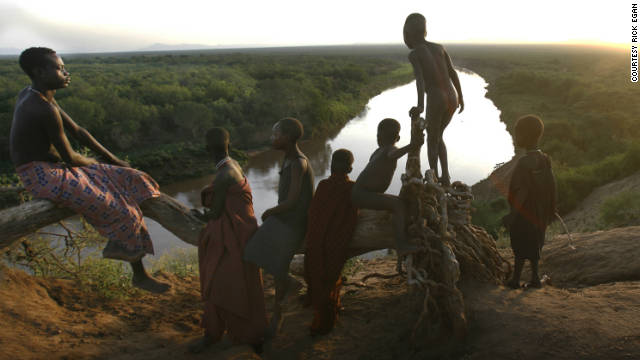
There is a potion she can take; the village medicine man can mix a concoction of roots and herbs that will make her sick and might cause her body to reject her pregnancy, taking her baby’s life before others can take it from her.
Many women choose this path. Erma won’t. Because this time, at least, she has some reason to hope that her child might be spared a violent death. Far away from her village, she has heard, there is an orphanage for mingi babies. She has pleaded with village leaders to let her child go there.
Either way, though, she won’t be allowed to see her baby. Once again, she’ll be left to dream about what her child might look like.
“This time, I think, I might have a girl,” Erma says.
Again, her head hangs low. Again, the boy next to her drops his own head into her lap, glancing up with a wry smile.
This time, though, Erma doesn’t smile back. She gently strokes his smooth brown cheek.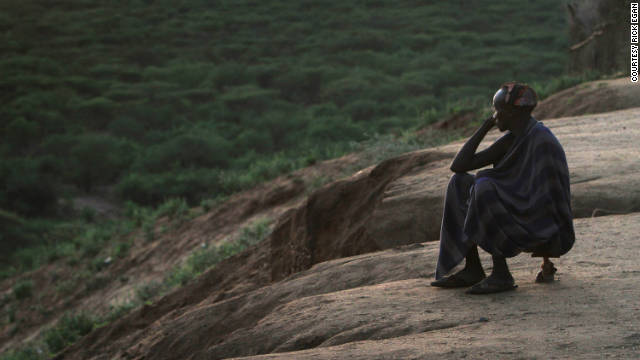

‘This was our culture‘They have taken her tribal clothes. Her beads, her animal skins and her jewelry have been replaced by a tattered shirt and loose-fitting skirt. In that and most other visible regards, Mashi Lamo is indistinguishable from the other inmates at the Jinka Prison Institute.
Yet everyone in this ragtag penitentiary knows who she is. “The mingi mother,” says one guard, a woman whose crisply pressed khaki uniform seems to stand out in defiance of this dirty, dilapidated jail, cut into a hillside in the South Omo region’s administrative capital. “Yes, we all know what happened to her. It is very sad.”


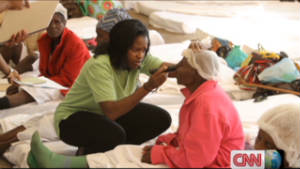
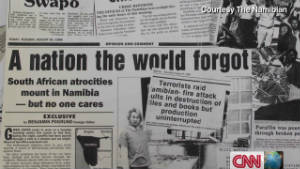
It is not typical for Kara mothers to be asked to kill their own mingi children — and none are known to have done it of their own volition. In any case, fellow Kara say Mashi could not have killed her baby; she was far too weak after the birth to have done such a thing. It was other women who took the child away, they say.
But when police arrived, Mashi took the blame. Within days, she had been sentenced to three years in prison. She had no attorney, and there was no trial.
She may be a prisoner today, but her past and future are inexorably Kara. Mashi can speak and understand only her native language. She’s never been to school. When she is finally released, there will be only one place to go.
And so, under the watchful eyes of several other Kara prisoners, Mashi stands by her story.
“What they say is false,” she says of those in her tribe who have proclaimed her innocence. “I did it all myself.”
But asked if she deserves to be in prison, the teenager sinks her face into her hands.
“I hate it here,” she says. “I wanted to keep my baby, but that was not allowed. This was our culture.”
A few feet away, another young prisoner — girlish in figure and demeanor — hides behind a corrugated metal wall and listens in. Prison guards say she is the only other person serving time here for a mingi killing, and they say she shares Mashi’s plight.
But she cannot bring herself to speak of what happened. “This one prefers to forget” the shipshape guard says.
Unevenly executed as it might be, the government’s effort to crack down on mingi killings has had an effect on the Kara. Combined with other interventions, the fear of prison might be helping to save some children.
But not all of them.
“Before, they did it in the open,” says Solomon Ayko, a gangly young Kara man who has witnessed several mingi killings. “Now, it just happens in secret.”
‘They are human‘The Kara don’t count the passing years as outsiders do, but by Ari Lale’s recollection, it happened about 15 years ago, when he was a young man, eager to prove himself to the rest of his tribe.
A kumbaso baby had been born. Leaders asked Ari to supervise the child’s execution.

“The baby was crying,” Ari says, “so we put sand in its mouth and he was still trying to cry but couldn’t anymore.”
Soon, the child was dead, and Ari escorted a group of women away from the village to throw the tiny boy’s body into the bush.
What became of the child’s remains? “The hyenas or other animals took it away,” Ari says with a shrug.
Today, Ari is the leader of Korcho village, and he counts his participation in the boy’s death as one of his proudest memories.
“All the families would thank me for throwing away that baby,” he says. “If I had not done it, they would have been angry.”
It is extremely uncommon for police officers to make the arduous trip from Jinka to any of the Kara villages, but Ari says he and other leaders are nonetheless wary of the threat of prison. At some point, he says, the government will want to make an example out of someone of his stature.
But Ari, who wears his hair taut under a hard, red clay bun in the way of his tribe’s warriors, has not stopped believing in the dark magic of mingi. And so he and others have found a different way to carry out the killings.
They will not drown or suffocate the children, as they once did. But they have forbade anyone from the village to have contact with a cursed baby.
“If a mother was to give the baby her breast, she would also become mingi,” he says. “After the baby is born, we keep it alone in the house and we do not give it water or milk.”
Without nourishment, the infants quickly die, and there is little that can be done to prove that a baby wasn’t simply stillborn.
Ari appears to be pleased about this solution. Yet he balances his pride with a lament for the dead. “They are human,” he says of the mingi children.
For all of the praise he got for carrying out that first killing, Ari says, he would have much preferred to let the child live, if only there had been another way.
For some, now there is.
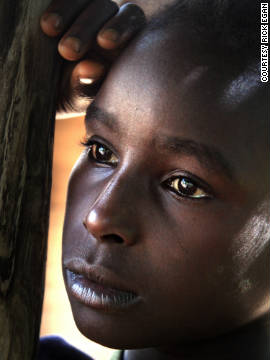
‘A sickness in our culture‘Kara children die all the time.
Many succumb to disease. Others are killed by wild animals. And some are sacrificed in the name of mingi.
For Shoma Dore, that was simply part of life.
“This is something that came down from generation to generation,” Shoma says. “If a baby comes with the top teeth before the bottom teeth, it must be killed. If it comes without the ceremony, it must be thrown away. … I didn’t realize there was anything wrong with it.”
Not, that is, until Shoma left the tribe to attend school in his early teens. In Jinka, he says, he realized for the first time the evil that was being done by his tribe. And when he returned, two years later, he found that others among the Kara’s more educated youths had come to the same realization.
“There are many important and good parts of our culture — there is also a sickness in our culture, and we have to change ourselves,” says Aryo Dora, who decided a few years ago to go with Shoma and about 30 other young Kara to plead with tribal elders to stop the killings.
Their plan, developed with the assistance of a team of Westerners, was simple: If mingi children could be sent far away from the village, they would pose no risk to the tribe.
“Once we explained the plan, they agreed quite easily,” Shoma recalls.
And that is how the orphanage began.
It wasn’t long before Webshet Ababaw was drawn into the fight. The professional tour guide and driver was in Jinka when he received a call from the orphanage. Leaders there had received word that a kumbaso girl was about to be born in the Kara village of Labuk. They needed someone with a four-wheel-drive vehicle who wasn’t afraid to race across the axle-breaking savannah to get to the village in time to save her.
No one seemed inclined to help find the child when Webshet and an official from the orphanage arrived in the village, but they finally found the infant lying on the ground behind a stick hut. Her mouth was filled with dirt and sand, but she was alive and seemed to be in relatively good health, Webshet says.
Piecing together a newborn first-aid regimen from what he’d seen in the movies and in a high school health class, Webshet unstrung a lace from his shoe and tied it around the baby’s broken umbilical chord. When no one in the village would give him a blanket, he wrapped the shivering child in his jacket. And when no one would give him milk, he found a goat, crouched beside it, and took a small amount for the girl.
None of the Kara had helped him on that day, but as he raced back to Jinka, Webshet looked at the small bundle in the passenger seat beside him and smiled.
There she was, improbably cooing as he bumped along the rugged dirt road.
“At least someone decided to contact us,” he says. “That is the only reason why she was alive.”
Orphanage officials later named the baby Edalwit, which means “she is lucky.”
Today, more than 30 mingi children live together in a small single-story home in a quiet Jinka neighborhood. Aryo, who is co-director of the orphanage, won’t grant permission for outsiders to check on the children — a rule intended to protect the orphans from potential exploitation, he explains. But, he says, they are loved, cared for and schooled with the hope that one day, they will be allowed to return to their families.
“These children are the future leaders of their tribes,” Aryo says. “They are going to grow up big and strong. They are the ones who will end mingi.”
‘We did our best‘It is a bright May morning in Korcho. In the communal spaces between the round, grass-topped huts, dozens of women are on their knees, vigorously thrusting their body weight into stone hand mills, grinding sorghum into flour.
Zelle Tarbe, though, is working inside. It has been just six days since she gave birth to her baby boy. Her breasts are still swollen — full of milk that will not nourish her child. The shock of losing him is still plastered across her face.
Zelle, who is unmarried, knew she would have to give up the child, but it was harder than she expected. “I wanted to keep him with me,” she says.
But she is nonetheless feeling very fortunate, “because my son is alive.”
At one point, there were six women we knew about who were pregnant with mingi children. We only got one.Jessie Benkert, an American part of the mingi rescue effort
Zelle was able to spend a few short moments with her baby before orphanage officials spirited him away.
“He was so sweet and beautiful,” she says from the shadows of the hut as a friend butchers a goat and hangs its carcass on the wall beside her. “But I did not give him a name because he was mingi and could not stay with me.”
Already, though, she is dreaming of a day in which she might make the journey to see her boy.
“Someday, I hope, I can visit him in Jinka,” she says.
No one, least of all Zelle, would argue that the rescue mission isn’t preferable to death for mingi children. But the orphanage has nonetheless been a controversial solution. A Christian group that supported the effort for two years withdrew its backing this spring after accusing the orphanage’s director of stealing money donated by American benefactors.
Orphanage officials counter-accused the Americans — who had helped arrange the adoptions of four mingi babies — of stealing the children from their families. The adoptions were, in fact, all legal under Ethiopian law, which treats mingi children as abandoned. But the orphanage leaders have argued that the biological parents surrendered their babies under cultural duress and should have the right to reclaim those children if their situation were to change.
Either way, adoptions and orphanages don’t address the root causes of mingi. And even when it had the support of a determined and resourceful team of Westerners, the rescue and shelter system was able to save only a fraction of the endangered children.
“At one point, there were six women we knew about who were pregnant with mingi children,” recalls Jessie Benkert, one of the Americans who supported the rescue effort. “We only got one.”
Geography is as much an obstacle as tradition. The Kara tribe is separated into three main villages, and the only telephone able to reach the outside world is in the main village of Dus, an hours-long hike from the other communities. Hundreds of other Kara live deep within the bush and, tribe members say, are more likely to carry out mingi killings there without notice.
Getting from Jinka to any of the Kara villages in a four-wheel-drive vehicle is, in the best of situations, a half-day’s trip across soft savannah sands and muddy river beds. A light rain can delay the trip by days. And during the rainy season, which lasts for up to eight months each year, the route can be washed away entirely.
Tribal leaders in Korcho say about 20 mingi children have been born into their small village since the orphanage opened. Orphanage workers have arrived in time to save only about half of them, they say.
Last year, rescue mission leaders learned that a Kara woman had given birth to a mingi boy whom tribal elders had promptly attempted to kill by ripping out his umbilical cord. The wounds had quickly gone septic, and there was no time to send a car to retrieve the child. Evacuation by air was the only solution; chartering the aircraft cost $3,500.
“That was the sum of all the money we had,” said Levi Benkert, Jessie’s husband. “And we couldn’t be certain that, even if we did it, he was going to live.”
They did it anyway — and saved the boy. An online fundraising effort quickly recouped the costs of the evacuation, but rescue mission officials knew they couldn’t sustain those sorts of expenses. And, in any case, they’ve since been pushed out of the Omo River Valley by local government officials who have sided with the orphanage’s Ethiopian director.
“We did our best,” Levi Benkert says. “We saved as many children as we could. And we continue to pray for them every day.”
‘Out of fear‘The people of the Omo River Valley love their children.
That is what Andreas Kosubek has come to believe over six years of organizing medical mission trips into the Kara heartland.
“These people are really good people,” says the German missionary, who recently gained permission from tribal elders to build a home on Kara lands. “They are not doing this because they are evil, wild, dumb monsters. They’re doing it out of fear. They fear for the lives of others in the tribe.”
From Kosubek’s point of view, the fear will end only if the Kara come to believe in something stronger than mingi. In his way of thinking, that means introducing them to Christianity.
“But we cannot do that,” the 29-year-old evangelist says, “unless we approach them with humility and a dedication to service.”
And Kosubek says he has often failed in that regard.
Not long ago, a Kara man brought his sick daughter to Kosubek, who was on tribal lands to work on his home and not accompanied by anyone with medical training.
The toddler was breathing rapidly and not responding to her father’s words or touch.
“She was the same age as my daughter and, you know, if my daughter had been sick like that, there is nothing I wouldn’t have done to save her,” Kosubek says, noting that he would have immediately evacuated his own daughter to a hospital. “But so many things crossed my mind: It’s difficult, it’s expensive.”
The girl later died, probably of simple pneumonia.
“I could have helped her,” Kosubek says. “And I am ashamed.”
Kosubek recognizes the need to end mingi killings, but he doesn’t feel entitled to condemn those deaths.
“Far more children are dying in other ways,” he says. “These are ways that we can address and prevent immediately if we just cared enough. Before we judge, we have to ask ourselves what we have done to help these children.”
In that question, he believes, is a model for truly bringing an end to the slaughter — through genuine selflessness and compassion.
He’s seen it, firsthand, among the people of the nearby Banna tribe.
‘My children are also mingi‘In a smoke-filled mud hut in the village of Alduba, Kaiso Dobiar dips a ladle into a tar-black pot of coffee, filling her home with the aroma of the brew as she stirs the simmering liquid.
Kaiso is proud to be Banna, and she follows many of her tribe’s customs and beliefs. But she is also Christian and, wary of false idolatry, she and her husband refused to perform the rites mandated by tribal leaders before they conceived.
“So my children are also mingi, in that way of thinking,” says Kaiso, who is fostering two additional mingi children in her home.
A tiny girl crawls onto Kaiso’s lap, reaching over to help stir the pot. “This is Tarika,” Kaiso says. “She is 2 years old, and she is mingi.”
The girl was born without the appropriate Banna ceremonies, but her birth mother hid the child for six months. “Then the rains stopped for a short time,” Kaiso says. “The people rose up and said, ‘You must get rid of her. Throw her into the bush.’ But I said, ‘do not throw your child into the bush, give her to me.’ “
Also sharing this small hut with Kaiso’s family is Tegist, another mingi child who guesses her age at 7 or 8 years. Kaiso says her foster daughters cannot play with other Banna children and must remain in her family’s small compound.
“They will have to stay here until they are older,” Kaiso says. “After that? God, he knows.”
Missionaries first came to the Banna decades ago, and the Christian church here is larger than any other among the tribes of this region. Still, their numbers are small; Banna’s Christians make up just 1 or 2 percent of the tribe’s population.
But their collective efforts have been enough to almost eliminate mingi killings within their tribe. With little money or other means of support, Banna’s Christians have accepted responsibility for nearly all of the tribe’s mingi children. Many, like Kaiso, are already caring for one or more mingi boys and girls. One family has taken in 17 foster children.
They do so at great potential risk to their own families. As she steps outside her home, the precariousness of Kaiso’s situation becomes clear.
“Kaiso, why are you protecting those children?” an angry neighbor screams from beyond a stick fence. “Tell us why!”
The Banna have not faced drought or a significant bout with deadly disease for many years. That, local Christians say, has kept much of their neighbors’ anger at bay.
But if the tribe’s fortunes were to change, its leaders would be swift to identify a culprit, Banna tribesman Andualem Turga says.
“What you need to understand is that, to these people, these babies are like an influenza,” he says. “If it is not stopped, it can kill many people. That is what they believe. … And when things go badly, the people believe this more than ever.”
Another foster mother, Uri Betu, tries not to think about such things. Her faith, she says, is clear on her responsibilities to the two mingi children who live in her home — and any others that need her care.
“For now, we do not worry,” Uri says as she watches her pair of 2-year-old foster daughters, Tariqua and Waiso, play in her yard.
Over time, Uri prays, the Banna will see that the presence of mingi children in their midst is unrelated to the patterns of rain and sun that sometimes cause their crops to fail.
Still, she laments, “there is a long way to go to change the beliefs we have had for so long.”
 Erma Ayeli’s first child was considered “mingi,” or cursed by her Ethiopian village, and killed. A child can be mingi because of physical deformities, illegitimacy, ancient superstitions and a variety of other reasons. If they do not kill the cursed infant, villagers believe, bad luck will come to the whole community.
Erma Ayeli’s first child was considered “mingi,” or cursed by her Ethiopian village, and killed. A child can be mingi because of physical deformities, illegitimacy, ancient superstitions and a variety of other reasons. If they do not kill the cursed infant, villagers believe, bad luck will come to the whole community.